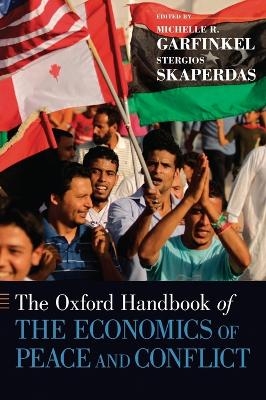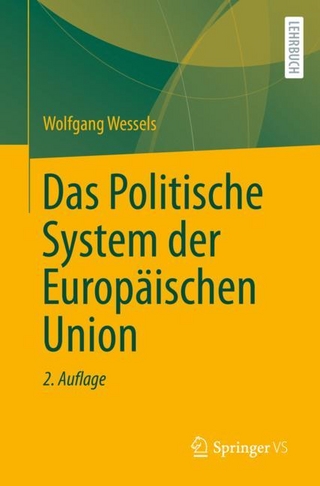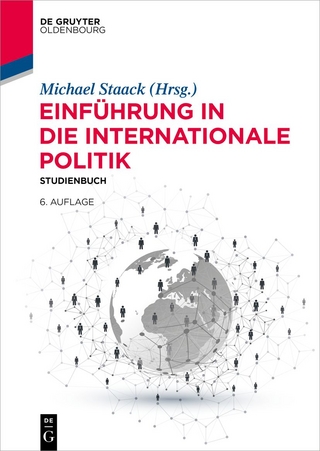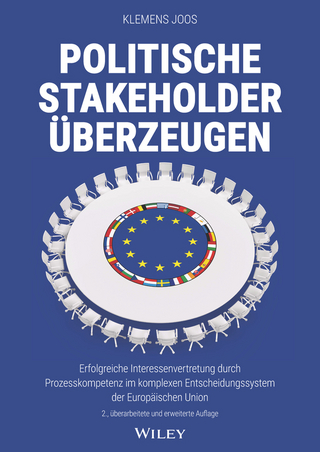
The Oxford Handbook of the Economics of Peace and Conflict
Oxford University Press Inc (Verlag)
978-0-19-539277-7 (ISBN)
Social scientists and policy makers have long been interested in the causes and consequences of peace and conflict. This handbook brings together contributions from leading scholars who take an economic perspective to study the topic. It includes thirty-three chapters and is divided into five parts: Correlates of Peace and Conflict; Consequences and Costs of Conflict; On the Mechanics of Conflict; Conflict and Peace in Economic Context; and Pathways to Peace. Taken together, they demonstrate not only how the tools of economics can be fruitfully used to advance our understanding of conflict, but how explicitly incorporating conflict into economic analysis can add substantively to our understanding of observed economic phenomena. Some chapters are largely empirical, identifying correlates of war and peace and quantifying many of the costs of conflict. Others are more theoretical, exploring a variety of mechanisms that lead to war or are more conducive to peace.
Michelle R. Garfinkel is Professor of Economics at UC Irvine. Her research focuses on conflict in numerous economic settings, and has been published in such journals as the American Economic Review. Stergios Skaperdas is Professor of Economics at UC Irvine. He has developed an approach that allows the study of a number of economic and political problems. His research has been published in a variety of journals, including the American Economic Review and the American Political Science Review.
I Introduction ; 1. Economic perspectives on peace and conflict. ; Michelle R. Garfinkel and Stergios Skaperdas ; II Correlates of peace and conflict ; 2. Informational aspects of conflict. ; Karl Warneryd ; 3. Commitment problems and shifting power as a cause of conflict. ; Robert Powell ; 4. Bargaining and conflict with incomplete information. ; Santiago Sanchez-Pages ; 5. The Hobbesian trap. ; Sandeep Baliga and Tomas Sjostrom ; 6. Religion, conflict and cooperation. ; Michael T. McBride and Gary Richardson ; 7. Comparing polarization measures. ; Joan Esteban and Debraj Ray ; 8. Inequality, polarization and conflict. ; Jose G. Montalvo and Marta Reynal-Querol ; 9. On the causes of civil war. ; Anke Hoeffler ; 10. Reflections on Africa's wars. ; Jean-Paul Azam ; III Consequences and costs of conflict ; 11. Methods for measuring aggregate costs of conflict. ; Javier Gardeazabal ; 12. How many bucks in a bang: On the estimation of the economic costs of conflict. ; Tilman Bruck, Olaf J. de Groot and Carlos Bozzoli ; 13. Estimating the costs of war: Methodological issues, with applications to Iraq and ; Afghanistan. ; Joseph E. Stiglitz and Linda J. Bilmes ; 14. Estimating the human costs of war: A sample survey approach. ; Michael Spagat ; 15. Mental health in the aftermath of conflict. ; Quy-Toan Do and Lakshmi Iyer ; 16. Measuring the economic costs of terrorism. ; Walter Enders and Eric Olson ; 17. Assessing the e_ects of military expenditure on growth. ; Giorgio d'Agostino, J. Paul Dunne, and Luca Pieroni ; 18. The economic welfare cost of conflict: An empirical assessment. ; S. Brock Blomberg and Gregory D. Hess ; IV On the mechanics of conflict ; 19. Technologies of conflict. ; Hao Jia and Stergios Skaperdas ; 20. Endogenous formation of alliances in contests. ; Francis Bloch ; 21. Conflict with multiple battlefields. ; Dan Kovenock and Brian Roberson ; 22. Laboratory experiments on conflict. ; Klaus Abbink ; V Conflict and peace in economic context ; 23. War, trade, and natural resources: A historical perspective. ; Ronald Findlay and Kevin O'Rourke ; 24. Trade in the shadow of power. ; Michelle R. Garfinkel, Stergios Skaperdas, and Constantinos Syropoulos ; 25. Conflict and policy in general equilibrium: Insights from a standard trade model. ; Ernesto Dal Bo and Pedro Dal Bo ; 26. The use of coercion in society: insecure property rights, conflict and economic backwardness. ; Francisco M. Gonzalez ; 27. War and poverty. ; Patricia Justino ; 28. Aggressive elites and vulnerable entrepreneurs: Trust and cooperation in the shadow ; of conflict. ; Halvor Mehlum and Karl Moene ; VI Pathways to peace ; 29. Globalization and international conflict: Can FDI increase cooperation among nations? ; Solomon W. Polachek, Carlos Seiglie, and Jun Xiang ; 30. National borders, conflict and peace. ; Enrico Spolaore ; 31. Political institutions and war initiation: The democratic peace hypothesis revisited. ; Michelle R. Garfinkel ; 32. Why follow the leader? Collective action, credible commitment and conflict. ; Philip Keefer ; 33. Conflict -inhibiting norms. ; Peter T. Leeson and Christopher J. Coyne
| Erscheint lt. Verlag | 24.5.2012 |
|---|---|
| Reihe/Serie | Oxford Handbooks |
| Zusatzinfo | 32 illustrations |
| Verlagsort | New York |
| Sprache | englisch |
| Maße | 251 x 185 mm |
| Gewicht | 1721 g |
| Themenwelt | Sozialwissenschaften ► Politik / Verwaltung ► Europäische / Internationale Politik |
| Wirtschaft ► Allgemeines / Lexika | |
| Wirtschaft ► Volkswirtschaftslehre ► Mikroökonomie | |
| ISBN-10 | 0-19-539277-9 / 0195392779 |
| ISBN-13 | 978-0-19-539277-7 / 9780195392777 |
| Zustand | Neuware |
| Haben Sie eine Frage zum Produkt? |
aus dem Bereich


